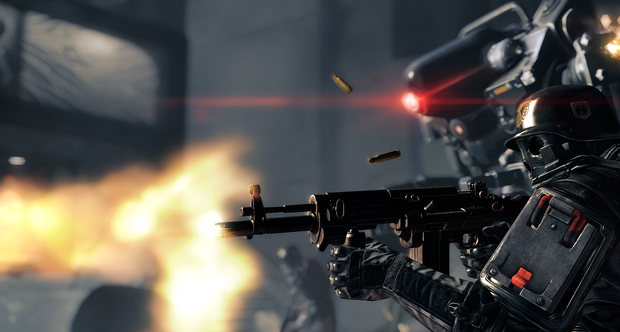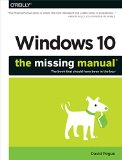

No modern-day racer captures the romantic ideal of driving a racing car like GRID Autosport. I’m talking about the roar of the crowd and the squeal of big, fat, slick tyres over smooth asphalt. Lock-ups into hairpins as you dive down the inside of the leader on the last lap. The sensation of riding the knife-edge of grip and wrestling your car back from the brink of disaster as you fishtail over a kerb. Approaching a fast corner wheel-to-wheel with an unyielding opponent and wondering if either of you is actually going to give. Every little drama is reflected in the superb sensation of movement, making it feel like you’re in GRID Autosport, not just influencing it.
The game is rooted in simulation, certainly, but you will spend significantly less time in the gravel than more straight-laced sims. The action is exaggerated too, with extremely fallible AI that not only makes believeable mistakes, but can experience a blowout at 160mph and end up flipping against a tyre wall, sending gravel and rubber flying into the air. This larger-than-life arcade excitement may be too chaotic for fans of ultra-serious sims (especially when there’s almost always a track-wide pile-up after the first corner), but everyone else will love the ‘highlights reel’ feel because, fundamentally, it is exciting to play.
That excitement isn’t limited to witnessing and dodging incidents, as the AI drivers exhibit the finest track behaviour yet seen in a racing game, making extended battles feel like a showdown between two great rivals. Get into a close-fought race with one of these guys and you’ll witness defensive driving lines, late-braking overshoots into hairpins, and fiendishly clever cut-backs to instantly regain lost positions. As a result, a normally-disappointing 8th place finish can feel just as rewarding as a win, especially starting from the back with the assists switched off.
Indeed, playing on the hardest setting is a blast, simply because it sets your ‘Flashback’ count to 0, meaning you can’t just undo errors Prince of Persia-style with a tap of Y, forcing you to consider your car’s damage levels as you drive. For maximum authenticity, you can even turn off the HUD and rely on aural feedback from your pit engineer by asking him about the condition of your car, or how you’re doing in the race via the d-pad.
The PC version is magnificent and would easily pass as a PS4/Xbox One game (though sadly the game is not coming to those machines). The Xbox 360 version may not have a 60fps frame rate or 1080p resolution, but even so, it’s astonishingly close to the PC. With 3D spectators, real-time damage modelling, and 16 cars on-track, it’s a technical masterpiece. The PS3 version, however, is not quite as slick. It looks noticeably rougher, is more susceptible to frame drops and screen tearing, and the textures look comparatively muddy. Still impressive, but if you have the choice, get the PC or 360 version.
Many of the game’s triumphs come from the fact Autosport has been quite openly designed around feedback from the community over the good-but-disappointing GRID 2. Normally, I would argue it’s a very bad idea to listen to the more vocal sections of the internet when designing a game. But in the case of GRID Autosport, it has absolutely turned out to be the right thing to do.
Let’s tick off the key improvements that this feedback demanded. Instead of having no cockpit cam, Autosport has two. Demolition Derby is now playable right from the beginning of the game, instead of tacked-on DLC. The drift-centric, simplified handling of GRID 2 has been replaced with responsive, nuanced control. The optional driving assists like traction control and anti-lock brakes are all back. The track list is a best-of compilation of GRID 1, 2 and real-world locations (and point-to-point tracks are all gone, to make this a more traditional racing game), while the career’s structure is much more focused on what you want to do.
That last one’s made a huge difference to how extended sessions feel. The game’s front end has been massively simplified and split into five disciplines, the branches of which can be dipped into at your leisure for a season at a time. You could just play single-seaters forever (and I wouldn’t blame you--they’re wonderful), but if you do level up your XP evenly over all five categories, you unlock special, multi-discipline race series, so it is worth exploring all the avenues. Some seasons can feel a little too long if you do enjoy variety, but if longer play sessions are your game, you can multiply the lap count in the options.
There’s a decent sense of rivalry with other drivers in the championships (curse you, Nathan McKane!) which gives even quickfire races more meaning when the name of your championship rival is superimposed over his car as it whizzes by. It’s not as integral to the experience as the likes of TOCA Race Driver 2’s excellent scripted narrative, and GRID 1’s constant aural feedback on where your opponent is currently running is still superior to Autosport’s, but the experience is richer for having clear rivals to beat.




 Wolfenstein: The New Order Walkthrough Guide Part 12 - Giant robot guns on Gibraltar Bridge
Wolfenstein: The New Order Walkthrough Guide Part 12 - Giant robot guns on Gibraltar Bridge 10 Great Gifts for Windows Users
10 Great Gifts for Windows Users The Witcher 3: Hearts of Stone Diagrams, Viper Armor locations
The Witcher 3: Hearts of Stone Diagrams, Viper Armor locations Fallout 4: Infinite Special Points Glitch On PS4 and Xbox One Discovered
Fallout 4: Infinite Special Points Glitch On PS4 and Xbox One Discovered Dark Souls II Wiki – Everything you need to know about the game .
Dark Souls II Wiki – Everything you need to know about the game .